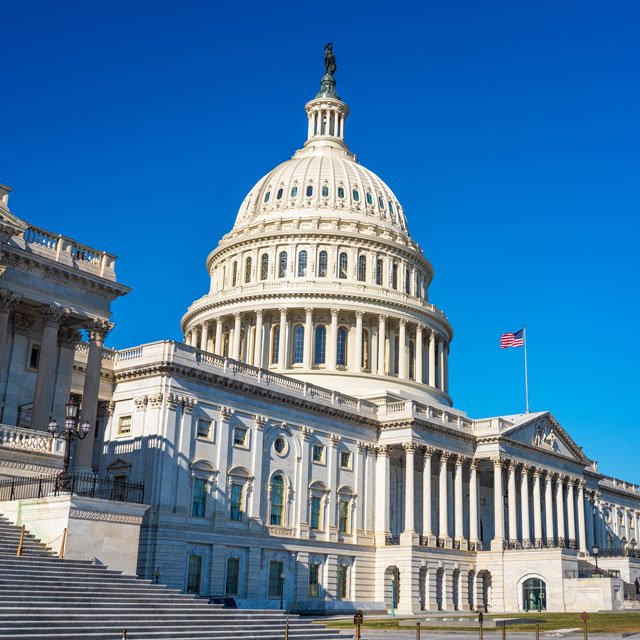Health Insurance
Step-by-Step: Congressional Proposals Could Help Unlock Information Key to Curbing U.S. Health Care Spending
One component of the recent explosion in spending on outpatient care are “facility fees”—the fees hospitals and health systems charge for outpatient visits to hospital-owned sites of care. As hospitals have created vertically integrated health care systems by acquiring outpatient delivery sites, facility fee charges have proliferated. Facility fees are often unrelated to the type of outpatient care a patient receives and can vary tremendously by health system and location. This issue is of particular concern for commercial insurers and their enrollees because federal law regulates prices for outpatient services delivered to Medicare enrollees, including facility fees, whereas there are no federal regulatory limits on prices charged privately insured patients.
Several states have taken action to regulate facility fee charges for outpatient care, but policy reforms and payer responses to the growth in outpatient charges are often obstructed by incomplete information. A claim for a routine test provided in a physician office owned by a hospital system, for example, usually generates both a professional claim from the physician plus a facility claim from the hospital, but the insurer often cannot tell whether the care was provided inside a hospital or in a physician’s office. This missing information can prevent insurers from effectively negotiating with providers on the total price paid for services, and hinders payers, policymakers, and researchers from understanding the full scope and total costs of outpatient services and comparing those trends across different outpatient settings.
Current billing practices obscure who provides care and where they provide it. For example, claims forms may include the address and national provider identifier (NPI) for a hospital’s main campus or billing office rather than the off-campus office where a patient received care. Claims forms (or the electronic equivalents) for facility claims and professional claims do not use the same conventions for identifying the physical location of care and whether it is a physician office, on-campus outpatient department, or off-campus outpatient department, thus frustrating efforts by payers and researchers to associate or link the professional and hospital claims for the same outpatient service. Consequently, payers and researchers may not be able to identify all claims associated with a single service. Unreliable addresses on billing forms and the fact that health care professionals may practice out of multiple locations (some of which may be owned by health systems and others owned by the provider themselves) also conceal key information from payers and other stakeholders about outpatient care costs and utilization.
This opacity hampers payment reforms for outpatient services. For example, a state or the federal government may seek to limit facility fee payments when care is provided in certain off-campus locations, or they might require prices charged for particular low-risk services to be the same regardless of where they are provided, a practice often referred to as “site neutral pricing.” At this time, however, only the hospitals have a reliable sense of how many services, visits, and spending these policy changes would affect.
A Congressional Proposal Could Facilitate Future Reforms
Congress is considering reforms that would help remedy some of the current information gaps. The Lower Cost, More Transparency Act recently passed the U.S. House of Representatives. Among other provisions, this federal bill would require each off-campus outpatient office owned by a hospital or health system to obtain a unique NPI from the U.S. Department of Health and Human Services (HHS). This NPI must be distinct from the NPI held by any provider entity that owns or is affiliated with the outpatient provider, and the off-campus outpatient provider must use this unique identifier when filing a hospital claim under Medicare. An off-campus clinic, for example, would bill using its own identifier, rather than the NPI for the main hospital campus. Unique NPIs would reveal the specific location where a patient received care, provide far greater insight into which claims are for the same service, and facilitate total cost of care calculations. Since implementing a broader version of this type of requirement, Colorado has seen a dramatic shift in how hospitals and health professionals prepare and submit their bills, resulting in more usable information.
If enacted, this unique NPI requirement would, at a minimum, provide crucial information on outpatient services Medicare beneficiaries receive and allow the Centers for Medicare & Medicaid Services (CMS) to see which services and which providers are charging facility fees for care delivered through their off-campus entities. This data is valuable for tracking spending and for estimating the implications of different site neutrality policies that CMS might consider.
However, this proposal does not require hospital-owned or affiliated outpatient sites to use unique NPIs when they file claims with private insurers, who have surprisingly little understanding of where their enrollees receive services. Unique NPIs would have greater value if providers had to include them on private claims (as the Colorado law requires), or if private insurers broadly required outpatient entities to file claims with these unique identifiers. Other federal proposals—notably the Bipartisan Primary Care and Health Workforce Act, as passed by the Senate HELP Committee in the fall of 2023—would extend the unique NPI requirement to private payers.
A unique NPI requirement would be even more effective if outpatient entities were required to use unique identifiers on both hospital claims and professional claims. Private insurers and researchers could then connect the multiple claims filed for each single service to see the total price paid for each episode of care provided at each location. Insurers would then be in a stronger position to negotiate with providers on the total prices paid for care, and policymakers and researchers could better understand the variation in payment rates and the implications of potential policy changes to regulate these total prices.
Adding a requirement for outpatient departments located on hospital campuses to obtain unique identifiers when filing claims for all payers would also provide useful information to payers and policymakers considering reforms. As MedPAC and others have suggested, an array of services typically and safely performed in physician offices can be identified and reimbursed at the same rate without compromising quality, regardless of whether such services are provided in an on-campus outpatient department or an off-campus setting. Moreover, leaving on-campus outpatient departments and physician offices out of any new payment-tracking structure creates a perverse incentive for hospital systems to locate these entities on their hospital campuses in order to obtain higher payments for the same services.
Finally, fully understanding health systems’ pricing structures and how they vary by provider ownership requires regularly updated information on the ownership of outpatient departments and professional offices; Massachusetts, for example, requires provider organizations to provide annual updates on their organizational and operational structure and governance. Seeing how health system A’s prices compare overall to health system B’s prices for service X requires knowing which physician offices and which outpatient clinics are owned by which health system. Since other provisions of the bill give the HHS Secretary flexibility to require additional information from providers, there appears to be room to ask for ownership information through the regulatory process. For example, HHS could require reporting system ownership in applications for a unique identifier, with some mechanism for regular updating of ownership information over time.
Takeaway
Key provisions of The Lower Costs, More Transparency Act would help identify sources of growth in spending on care delivered through hospital-owned outpatient settings. The establishment of unique provider identification numbers for many outpatient care sites would provide valuable information for the Medicare program and policymakers. However, additional reforms—including requiring providers to use unique identifiers on commercial claims, applying this requirement to professional as well as facility claims, requiring on-campus providers to obtain and use unique identifiers, and establishing a reporting mechanism on provider ownership and affiliations—are needed to get a clearer picture of provider pricing for the privately insured and to further inform future policies to limit problematic pricing practices.
By Linda J. Blumberg and Karen Davenport
Related Posts
- Self-Care With Endometriosis
SOURCES:Cara King, DO, director, benign gynecologic surgical procedure; affiliate program director of minimally invasive gynecologic…
- Step-by-Step How you can Throw a Knockout Punch
Touchdown a knockout punch is the final word dream for anybody entering into the boxing…
- A Step-by-Step Information to Flexi Rod Your Hair – Hype Hair
Written by: Alexis Moore For those who’re trying so as to add some bounce and…

















